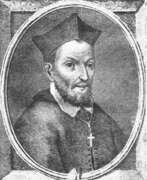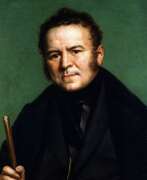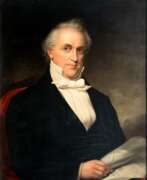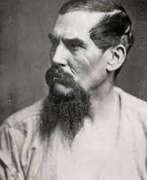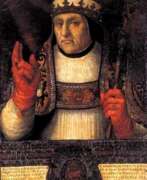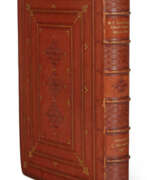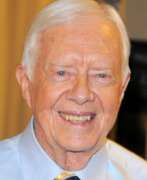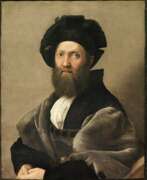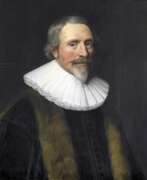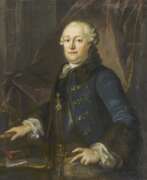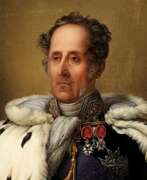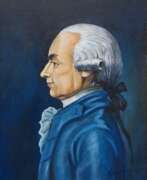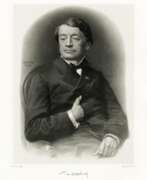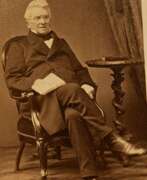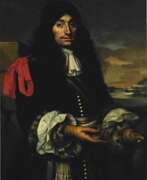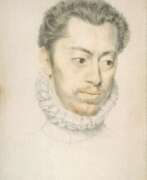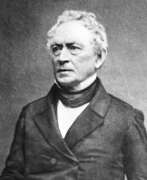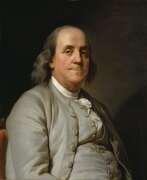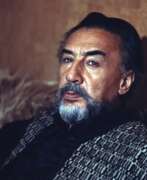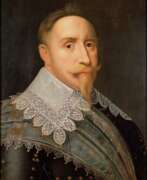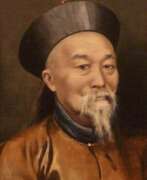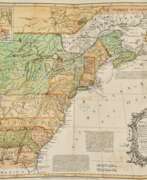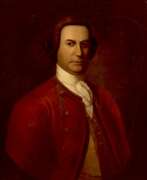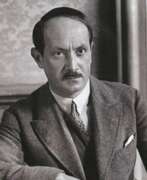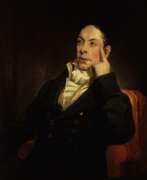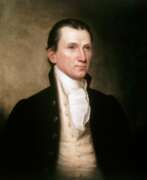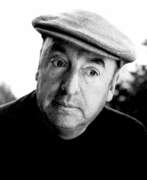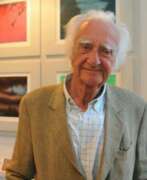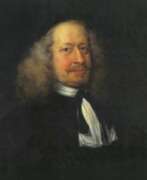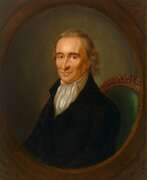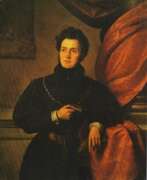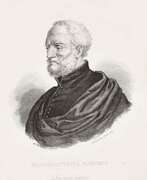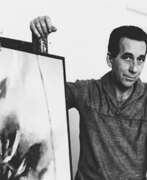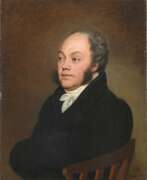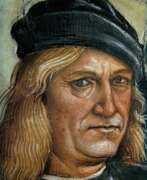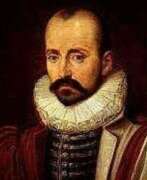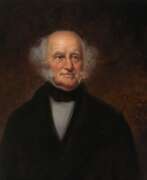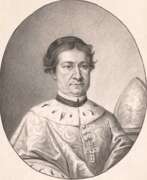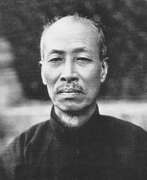Diplomats
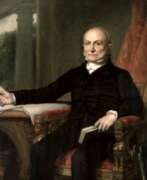

John Quincy Adams was an American politician and statesman, the sixth President of the United States (March 4, 1825 - March 4, 1829).
John Quincy Adams was the son of John Adams, the second President of the United States, and, of course, public service was his destiny. As a child, in 1778 he traveled to France with his father, who was then U.S. Commissioner to France. At the age of 14, Adams became personal secretary to Francis Dana, the U.S. Minister to Russia, serving as his father's secretary as well during the negotiation of the Treaty of Paris (1783). In 1787, the twenty-year-old Adams graduated from Harvard University and, after studying law, began practicing in Boston.
In addition to numerous diplomatic appointments, Quincy Adams served as a U.S. Senator from Massachusetts from 1803 to 1808. President James Madison appointed Adams U.S. minister to Russia in 1809, and Adams served until 1814. And under President James Monroe, he served as Secretary of State from 1817 to 1825 and is considered one of the best Secretaries of State in U.S. history.
John Quincy Adams won the 1824 presidential election in a four-way race against Henry Clay, William Crawford, and Andrew Jackson. As president, Adams supported a program to modernize the U.S. economy. But his popularity declined because of his approach to Native Americans, whom he supported against the demands of settlers from the west.
After losing the 1828 presidential election to Andrew Jackson, John Quincy Adams was elected to the House of Representatives, where he served as a representative from Massachusetts for the next 17 years. In the House of Representatives, Adams became one of the most vocal opponents of slavery. He consistently defended abolitionist views and policies, denouncing slavery as an immoral institution and attacking the interests of Southern slaveholders. During the U.S.-Mexican War of 1848, Adams was a leading opponent of the annexation of Texas, farsightedly predicting that it would lead to civil war.
After suffering two strokes, Adams died on February 23, 1848, at the age of 80. Had fate not predestined him to pursue politics, John Quincy Adams would have become a famous poet. He spent his life composing poems in various genres. After his death, many of his poems were collected and published in Poems on Religion and Society (1848).
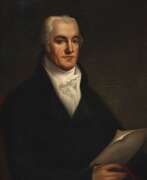

Joel Barlow was an American statesman, diplomat, French politician and poet.
A graduate of Yale University, he briefly served as a chaplain in the Revolutionary Army. In 1784, Barlow founded the American Mercury, a weekly newspaper in Hartford, Connecticut, and was admitted to the bar in 1786. Along with John Trumbull and Timothy Dwight, he was a member of the Hartford Witters, a group of young writers.
Joel Barlow's fame was brought to him by his poetic work The Vision of Columbus (1787). It is a dialog between Christopher Columbus and an angel and covers the entire history of America to the end of the American Revolution. The poem was signed by many leading figures of the time, including George Washington and Benjamin Franklin, and was popular on both sides of the Atlantic. The author later reworked the poem into a more cynical epic called Columbiad.
In 1788, Barlow traveled to France as an agent for the Scioto Land Company and persuaded a group of Frenchmen to emigrate to America, who eventually founded the town of Gallipolis, Ohio. In Paris he became a liberal in religion and an advanced republican in politics; he took part in the French Revolution and was granted French citizenship.
In the literary field, Barlow is also known for his work The Hasty Pudding (1796). It is a humorous poem inspired by a longing for New England and cornmeal, containing vivid descriptions of rural scenes.
In 1795-97. Barlow was sent to Algeria on a diplomatic mission and returned to the United States in 1805. In 1811 he was appointed U.S. plenipotentiary to France. Barlow participated in Napoleon's retreat from Russia and died in Poland.
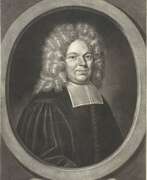

Jacques Basnage de Beauval was a French theologian and historian, diplomat and writer.
His father was a prominent lawyer and his grandfather and great-grandfather were pastors, Jacques studied theology and languages at the Academy of Saumur, then at Geneva and Sedan. In 1676, Jacques Basnage was appointed pastor at Rouen during the revocation of the Edict of Nantes, was forced to flee France for Holland, where he worked as a theologian, polemicist, historian, and diplomat in the service of the Grand Pensioner Hensius.
In 1717, on behalf of Holland, Basnage was sent to sign the treaty of the Triple Alliance (France, Holland, England). In the Annals of the United Provinces (1719-1726), compiled from the peace negotiations held at Münster, he displays breadth of vision, wisdom, and impartiality.
About 1719 Jacques Basnage was appointed historiographer of the Dutch states. He wrote several books on the Bible, the history of the Church, and the history of the Jewish people. Among the best known of these are his History of the Religion of the Protestant Denominations (1690), History of the Church of Jesus Christ to the Present Time (1699), written from Protestant positions, and History of the Jews (1706), as well as Jewish Antiquities, or Critical Notes on the Republic of the Jews (1713).
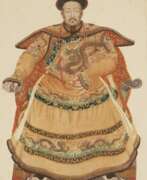

Joachim Bouvet was a French Jesuit monk and missionary who worked in China.
Joachim Bouvet was one of six Jesuit mathematicians chosen by Louis XIV to travel to China as his envoys and work as missionaries and scholars. In 1687 in Beijing, Bouvet began this work, especially in mathematics and astronomy, and in 1697 the Chinese emperor Kangxi (1654-1722) sent him as ambassador to the French king. Kangxi expressed his wish that Bouvet should bring more missionary scientists with him. Thus, in addition to his scholarly work, Bouvet was also an accomplished diplomat and served as a liaison between the Chinese Emperor Kangxi and King Louis XIV of France.
Bouvet brought to France a manuscript describing Kangxi's life with an eye for diplomatic subtleties, as well as a collection of drawings depicting graceful Chinese figures in traditional and ceremonial dress. The first French edition of The Historical Portrait of the Emperor of China was published in Paris in 1697, and was subsequently translated and published in other languages. And Bouvet returned to China in 1699 with ten new missionaries and a collection of King Louis XIV's engravings for Emperor Kangxi. He remained in China for the rest of his life.
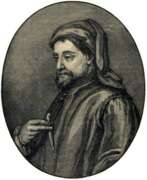

Geoffrey Chaucer was a medieval English poet and novelist, one of the founders of the literary English language.
Geoffrey Chaucer came from a wealthy family, in 1357 became a civil servant of Countess Elizabeth of Ulster and remained at the British court all his life. Later in his royal service, he traveled on diplomatic missions to France, Spain, and Italy. He made important contributions to the management of public affairs as a courtier, diplomat and civil servant. And very importantly, in these travels Chaucer was exposed to the works of Dante, Petrarch and Boccaccio, which later had a profound influence on his writing.
"The Canterbury Tales" became Geoffrey Chaucer's most famous and recognized work, although this voluminous work remained unfinished. He also wrote the popular science treatise "A Treatise on the Astrolabe", the historical poems "Troilus and Criseyde" and "Legends of Glorious Women", and many poems.
Geoffrey Chaucer is called the forerunner of the literature of the English Renaissance. He was the first to write works in his native language instead of Latin, for which he earned the title of "father of English poetry." Chaucer was buried in Westminster Abbey, and his grave became the first in the so-called "Poet's Corner", where Charles Dickens, Rudyard Kipling and Alfred Tennyson were later buried.
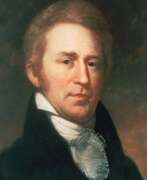

William Clark, an American frontiersman, is best known for co-leading the epic Lewis and Clark Expedition alongside Meriwether Lewis from 1804 to 1806. This journey was a monumental exploration of the American West, extending to the Pacific Northwest, which laid the foundation for westward expansion and significantly contributed to the nation's knowledge of the vast territory.
Before his fame as an explorer, William Clark had a substantial military career, beginning with his service in the militia and the U.S. Army during the Northwest Indian War. His experiences in the military, including participation in the Battle of Fallen Timbers, honed his leadership and survival skills, which were crucial for the success of the Lewis and Clark Expedition.
Following the expedition, William Clark continued to serve in significant roles, including as the governor of Missouri Territory and as a superintendent of Indian Affairs. His later years were dedicated to managing relations with various Native American tribes, navigating the complexities of the expanding American frontier.
For collectors and experts in art, history, and antiques, William Clark's life and contributions offer a fascinating lens through which to explore the early 19th-century American narrative. His maps, journals, and other related artifacts provide a unique perspective on this formative period in U.S. history.
To stay informed about new discoveries, exhibitions, and auction events related to William Clark, consider subscribing for updates. This subscription will provide you with valuable insights into the lasting impact of Clark's legacy on American culture and history.
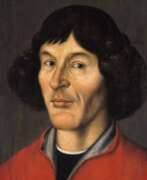

Nicolaus Copernicus (Polish: Mikołaj Kopernik) was a Polish and German scientist, astronomer, mathematician, mechanic, economist, and Renaissance canonist. He was the author of the heliocentric system of the world, which initiated the first scientific revolution.
Copernicus studied the humanities, including astronomy and astrology, at the University of Krakow and at the University of Bologna in Italy. Together with other astronomers, including Domenico Maria de Novara (1454-1504), he was engaged in observing the stars and planets, recording their movements and eclipses. At the time, medicine was closely related to astrology, as the stars were believed to influence the human body, and Copernicus also studied medicine at the University of Padua between 1501 and 1503.
Nicolaus Copernicus, based on his knowledge and observations, was the first to suggest that the Earth is a planet that not only revolves around the sun every year, but also rotates once a day on its axis. This was in the early 16th century when people believed the Earth to be the center of the universe. The scientist also suggested that the Earth's rotation explained the rising and setting of the Sun, the movement of the stars, and that the cycle of the seasons was caused by the Earth's rotation around itself. Finally, he correctly concluded that the Earth's motion in space causes the planets to move backwards across the night sky, the so-called retrograde direction.
Although Copernicus' model was not completely correct, it laid a solid foundation for future scientists, such as Galileo, who developed and improved mankind's understanding of the motion of celestial bodies. Copernicus completed the first manuscript of his book De Revolutionibus Orbium Coelestium (On the Rotation of the Celestial Spheres) in 1532. In it, the astronomer outlined his model of the solar system and the paths of the planets. However, he published the book only in 1543, just two months before his death, and dedicated it to Pope Paul III. Perhaps for this reason, and also because the subject matter was too difficult to understand, but the church did not finally ban the book until 1616.
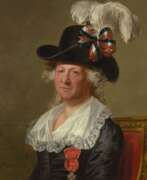

Charles d'Éon de Beaumont, known as Chevalier d'Éon and with many other names, was a French nobleman, diplomat, and secret agent who belonged to the Royal Secret diplomatic network. This amazing and versatile man was forced to live the second half of his life as a woman by virtue of his activities.
D'Eon participated in the Seven Years' War and spied for France while in Russia and England. In France and England he was known for his adventurous life and his many talents: he was an ambassador and secret agent in the service of Louis XV, a captain of dragoons during the Seven Years' War, a skilled swordsman, and a man of letters. After several missions to Russia, more often under the guise of a woman, he was sent to London in 1762 to assist the ambassador in the peace negotiations with England. For his contribution to the Treaty of Paris, signed the following year, he became a Knight of the Order of Saint Louis.
Needing money, and in order to receive a pension, he increasingly entered the role of a woman. In 1777 he received an order: "By order of the King: Charles-Geneviève-Louise-Auguste-Andrée-Timotheus d'Eon de Beaumont is ordered to remove the dragoon uniform she wears and to dress in accordance with her sex. Henceforth he always wore women's dress. Returning to London in 1785, d'Eon died there 25 years later. An autopsy conducted two days after his death found him to be male.
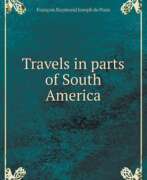

François Joseph de Pons, full name François Raymond Joseph de Pons, was a French traveler, writer, and diplomat.
De Pons, during his stay in Venezuela in the early 19th century, served as a political and diplomatic correspondent in Caracas, gathering information for the French government. This prompted him to write a book entitled: "A voyage through the eastern part of Terre Ferme, North America, made in 1801, 1802, 1803 and 1804; containing a description of the general chapter of Caracas and the provinces of Venezuela, Maracaibo, Varinas, Española Guiana, Cumana and Margarita Island", which also included a geographical map and plans of the capital Caracas and the main ports.
Contemporaries praised the work as "an important account of Venezuela, containing a description of the country and people, as well as a description of the growth and production of cacao, indigo, sugar, cotton, coffee, and tobacco." The first edition was published in Paris in 1806. This work was so popular and significant that in the same year it was translated by the writer Washington Irving and published in New York and London.
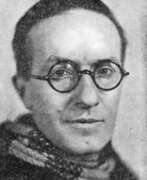

Hippolyte Jean Giraudoux was a French novelist, essayist, diplomat and playwright. He is considered among the most important French dramatists of the period between World War I and World War II. His work is noted for its stylistic elegance and poetic fantasy. Giraudoux's dominant theme is the relationship between man and woman—or in some cases, between man and some unattainable ideal.
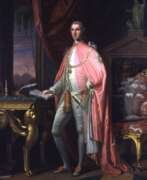

Sir William Douglas Hamilton was a British diplomat, archaeologist and volcanologist, a famous collector, and a Fellow of the Royal Society of London.
He served as British Ambassador to the Kingdom of Naples from 1764 to 1800, but most importantly, he was a passionate researcher of history, art and natural sciences and was a member of the Society of Dilettantes, established for the purpose of studying ancient art.
In Naples, Hamilton amassed a unique collection of antique vases and published an illustrated book about them. In parallel, Sir Hamilton studied the volcanoes Vesuvius and Etna, local volcanic and seismic activity, and the causes of earthquakes in the Neapolitan territory. As a corresponding member of the Royal Society, he sent the results of his research to London. His publications were very valuable for the time.
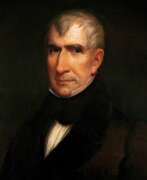

William Henry Harrison, an American military officer and politician, became the ninth President of the United States in 1841, making history with the shortest presidency due to his death just 31 days after taking office. Born on February 9, 1773, in Charles City County, Virginia, Harrison was the last U.S. president born as a British subject and the paternal grandfather of Benjamin Harrison, the 23rd president.
William Henry Harrison's early military career was marked by notable achievements, including participating in the Battle of Fallen Timbers in 1794, which concluded the Northwest Indian War. His leadership against Tecumseh's confederacy at the Battle of Tippecanoe in 1811 earned him the nickname "Old Tippecanoe." He was later promoted to major general during the War of 1812, securing a significant victory at the Battle of the Thames, which effectively ended the Indian confederation led by Tecumseh.
Before his presidency, William Henry Harrison had a prolific political career, starting in 1798 when he became the secretary of the Northwest Territory. He was then elected as the territory's delegate to the U.S. House of Representatives in 1799. In 1801, he became the governor of the Indiana Territory, where he negotiated numerous treaties with Native American tribes, acquiring vast tracts of land for the United States. Harrison's political journey also included terms in the U.S. House of Representatives, the Senate, and as the U.S. Minister to Colombia before being nominated by the Whig Party for the presidency in 1840.
His presidential campaign was famous for the "Log Cabin Campaign," where Harrison was presented as a man of the people, in stark contrast to the incumbent President Martin Van Buren, who was portrayed as an elitist. This strategy proved successful, and William Henry Harrison won the presidency with a significant margin. However, his time in office was cut short when he died of presumed pneumonia, making his wife, Anna Harrison, the first presidential widow to receive a pension from Congress.
Harrison's legacy is complex, marked by his military and political contributions that significantly impacted the United States' expansion and development during its early years.
For those interested in learning more about William Henry Harrison, signing up for updates is a great way to stay informed about new discoveries and interpretations of his life and contributions to American history. This subscription will alert you to new product sales and auction events related to this significant historical figure, providing a unique opportunity for collectors and experts in art and antiques to deepen their understanding of American history.


Joseph Coleman Hart was an American author, lawyer, and public servant of the first half of the 19th century.
Hart had a law degree, served as a colonel in the National Guard and as a school principal. During this period he wrote a number of geography textbooks that were widely used. He was a longtime resident of New York City and was friends with several literary men and worked as a journalist. At the end of his life, he served as the American consul in Santa Cruz de Tenerife in the Canary Islands.
Joseph Hart is best known today as the author of the novel Miriam Coffin, or The Whale Fishermen (1834). America's first whaling novel was originally written in part to encourage congressional support for whaling. But it is better known today for being the precursor to Herman Melville's famous novel Moby Dick.
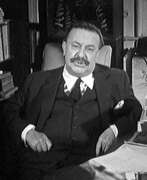

Adolf Hoffmeister (1902-1973) was a Czech artist, writer, journalist, playwright, translator, and diplomat, renowned for his multifaceted contributions to culture and art. His early career saw him collaborate with significant figures in the art world, including Philippe Soupault and Jaroslav Ježek. In 1928, Hoffmeister made his mark with a solo exhibition in Paris and became involved in various literary and artistic publications, such as Lidové noviny and Literární noviny.
Hoffmeister's art often intersected with his political views. He set up the anti-fascist magazine Simplicus in the 1930s and was a member of the Mánes Association of Fine Arts, where he defended the anti-Nazi artwork of John Heartfield. His life was dramatically affected by World War II; fleeing Nazism, he was interned in Paris and a Moroccan concentration camp before reaching New York in 1941. After the war, he returned to Prague and engaged in diplomacy and academia but faced political ostracization following his pro-reform activities in 1968.
Hoffmeister's work in collage was notable, especially his illustrations for Jules Verne's "Around the World in Eighty Days." He was also known for his libretto for the children's opera "Brundibar" and translating James Joyce’s "Anna Livia Plurabelle." His pieces, such as "Demonstration" (1963) and "Greek village by Syrakus" (1960), are preserved in archives like the Ruth and Marvin Sackner Archive of Concrete and Visual Poetry, illustrating his unique approach to visual storytelling.
For collectors, auctioneers, and art and antiques experts, Hoffmeister's works represent a compelling blend of artistic innovation and historical context. His legacy continues to inspire, and keeping informed about exhibitions or sales of his work is essential for those interested in 20th-century European art and literature.
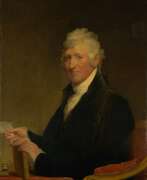

David Humphreys was an American soldier, statesman, diplomat, writer, poet, and biographer.
He received his bachelor's degree from Yale University, where he became a member of the Hartford Witters and taught, and went to serve in the Continental Army in the summer of 1776.
A close friend and aide to George Washington, Humphreys was an eyewitness and active participant in the early years of the United States. During his long career, Col. David Humphreys served as a soldier, secretary, diplomat, and was a writer, poet, orator, biographer, and industrialist. His speeches, poems, literary works, and correspondence with Washington and others of the founding generation serve as a valuable source for historians of the early republic in the late eighteenth and early nineteenth centuries.
Because of his intelligence and diligence, David Humphreys had a long record of service and held many public offices, among others serving as U.S. minister to Spain from 1797 to 1801. He was a member of the Royal Society of London and the American Antiquarian Society.
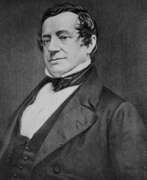

Washington Irving was an American Romantic writer, historian, and diplomat.
Irving has been called "the first American writer" to be recognized in Europe. In 1815, he traveled to England on family business. A huge success in England and the United States was The Sketch Book, published in several installments during 1819-1820, which contained two of the author's most famous works, Rip Van Winkle and The Legend of Sleepy Hollow, and which made him a literary star in both England and the United States.
He continued his literary endeavors and worked at the U.S. Embassy of Great Britain. Returning to the United States in 1832, Irving visited some little-known territories near the western fringes of the country, and this journey inspired his works Journey on the Prairie (1835), Astoria (1836), and The Adventures of Captain Bonneville (1837). Late in life he published several historical and biographical works, including the five-volume Life of George Washington (1855-1859).
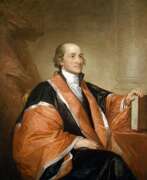

John Jay was an American lawyer and diplomat, statesman, and one of the founding fathers of the United States.
Jay came from French Huguenots, after graduating from King's College (now Columbia University) he entered law school and was admitted to the bar in 1768. After the outbreak of hostilities in the spring of 1775, Jay continued to serve both in New York and in the Continental Congress, which elected him president in late 1778.
In the fall of 1779 he was appointed minister plenipotentiary to Spain, which had recently entered into an alliance with France against England. In May 1782 he traveled to Paris, where a treaty was concluded that formally ended the war with Great Britain in 1783. Before returning to America in July 1784, Jay was appointed secretary of foreign affairs.
In 1788, Jay actively advocated for the ratification of the U.S. Constitution by the state of New York. Together with future President James Madison and economist Alexander Hamilton, he participated in the creation of the famous book The Federalist (1788). Under the new Constitution, President Washington appointed John Jay Chief Justice of the United States in 1789, and in July 1795 he became Governor of New York. After completing his second term as governor in June 1801. Jay retired to his farm in Bedford, New York.
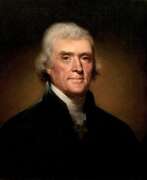

Thomas Jefferson was an American politician and statesman, the third President of the United States (March 4, 1801 - March 4, 1809).
Jefferson was the son of a planter and received a law degree. In 1774, he wrote A Summary of the Rights of British America, which attracted public attention, and he soon gained a reputation as one of the first advocates of American independence from the authority of the British Parliament. In the spring of 1775, the Virginia legislature appointed him a delegate to the Second Conference of the Continental Congress. A year later he was appointed to a committee of five, which also included Adams and Benjamin Franklin, to draft a formal statement of reasons to justify a break with Great Britain. Jefferson thus became one of the authors of the Declaration of Independence. Jefferson succeeded Benjamin Franklin as minister to France in 1785, was secretary of state (1790-1793) under Washington, and vice president (1797-1801) under John Adams.
A Democratic-Republican, Jefferson, who believed that the national government should play a limited role in the lives of citizens, was elected president in 1800. One of the most significant accomplishments of Jefferson's first administration was the purchase of the Louisiana Territory from France for $15 million dollars in 1803 (from the Gulf of Mexico to present-day Canada), effectively doubling the size of the United States. During his second term, Jefferson was focused on trying to keep America out of the Napoleonic Wars in Europe. After his second term as president, he was succeeded by James Madison in 1808.
Upon leaving office, Jefferson retired to his plantation in Virginia, pursued his favorite pastimes, and helped found the University of Virginia. In addition to politics, he is known as a writer, farmer, horticulturist, inventor, book collector, art historian, architect, and scientist. He died at the age of 83 on July 4, 1826, the 50th anniversary of the Declaration of Independence.
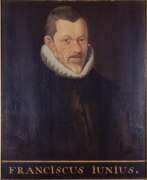

Francis Junius the Elder, born François du Jon, was a French linguist, exegete and professor of Reformed theology, and diplomat.
Junius first studied law and then theology and became a student of Jean Calvin and Theodore Beza in Geneva. For his success and knowledge of languages he was appointed minister at Antwerp, but was forced to flee to Heidelberg in 1567.
In collaboration with Immanuel Tremellius he wrote one of the significant translations of the Bible into Latin, and his theological work De Vera Theologia is the most important work on Reformed dogmatics. Some of du Jon's works were published in 1882 by Abraham Kuyper in his Reformed Library. His son François du Jon the Younger (1591 - 1677) became a noted art historian and founder of Germanic philology.
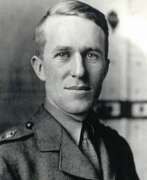

Thomas Edward Lawrence was a British scholar-archaeologist, military intelligence and strategist, writer and poet.
Thomas studied at the High School and Jesus College, Oxford, studying medieval military architecture in particular, researching Crusader castles in France and in Syria and Palestine. Then in the early 1900s he took part in an excavation, though more likely a cartographic reconnaissance from Gaza to Aqaba for strategic military purposes. The study was published in 1915 under the title The Wilderness of Zin (The Wilderness of Zin).
At the outbreak of World War I, Lawrence became a member of the cartographic staff of the War Office in London, tasked with producing a militarily useful map of Sinai. From 1914, with the rank of lieutenant, he was already active in various operations in Cairo and other Arab countries. It is believed that Lawrence made a significant contribution to the victory of the Arab revolt against the Ottoman Empire, and locals gave him the nickname Lawrence of Arabia.
Lawrence had time to work on his war memoirs as well, publishing a book about his activities, The Seven Pillars of Wisdom, in 1926. Also of interest are his poignant service chronicle "The Mint" and a considerable amount of correspondence. He was commissioned by book designer Bruce Rogers to translate Homer's Odyssey into English. Lawrence also wrote over 100 poems, which were published in the collection Minorities in 1971.
After World War I, Lawrence worked for the British Foreign Office and served in the Royal Air Force. He died in a motorcycle accident in May 1935 at the age of 46.
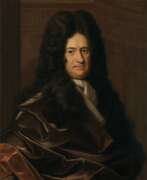

Gottfried Wilhelm Leibniz was a German philosopher and a prominent polymath in many fields of science.
Leibniz was a universal genius; he showed his talents in logic, mathematics, mechanics, physics, law, history, diplomacy, and linguistics, and in each of the disciplines he has serious scientific achievements. As a philosopher, he was a leading exponent of 17th-century rationalism and idealism.
Leibniz was a tireless worker and the greatest scholar of his time. In the fate of Leibniz, among other things, there is one interesting page: in 1697, he accidentally met the Russian Tsar Peter I during his trip to Europe. Their further meetings led to the realization of several grandiose projects in Russia, one of which was the establishment of the Academy of Sciences in St. Petersburg.
Gottfried Wilhelm Leibniz was also the founder and first president of the Berlin Academy of Sciences and a member of the Royal Society of London.
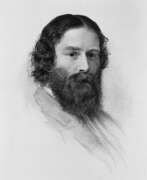

James Russell Lowell was an American poet, educator, and diplomat.
From 1845 to 1850, he wrote about 50 articles against slavery for periodicals. Two of Lowell's other two most important works were also published in 1848: the poem "Sir Launfal's Vision," praising the brotherhood of man, and "A Fable for Critics," a witty appraisal of contemporary American authors. These books, together with the publication in the same year of a second series of his poems, made Lowell the most popular new figure in 19th-century American literature.
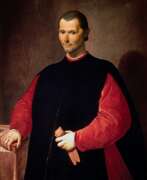

Niccolò di Bernardo Machiavelli was an Italian philosopher, politician and diplomat, historian and Renaissance writer.
As a young man, Niccolò Machiavelli faced financial difficulties due to his father's debts, but had access to a rich library. Machiavelli's early life and career began during a period of political upheaval in Italy. After the expulsion of the Medici family in 1494, for 14 years Niccolo Machiavelli served as a diplomat to the Florentine Republic. During this service, he gained a reputation as a cunning and unconventional thinker. However, when the Medici returned to power in 1512, Machiavelli was dismissed, imprisoned, and temporarily removed from political life.
During this period Machiavelli wrote his famous work The Sovereign, which has become one of the key works in the history of political philosophy. This book epitomizes the Machiavellian approach to politics, where the means justify the end, and where a leader should use any method to consolidate his power. The treatise drew criticism from the Pope, who condemned it for supporting rule through deceit and fear. Nevertheless, The Sovereign is still an important work of political literature, and Machiavelli has come to be called "the father of modern political theory."
Machiavelli lived the rest of his life in a small village near Florence, where he continued his creative endeavors, writing On the Art of War, as well as poems and plays. His literary legacy has become an integral part of the history of political philosophy.
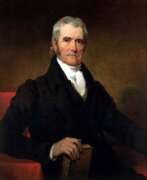

John Marshall was Chief Justice of the United States Supreme Court from 1801 to 1835, Secretary of State, and one of the founders of the American legal system.
During the Revolutionary War, Marshall served first as a lieutenant and after July 1778 as a captain in the Continental Army. In 1781 he left the service, studied law, and began practicing law in Virginia, in Fauquier County, and then in Richmond. He soon became head of the Virginia bar and was a member of the Virginia assembly. In 1788 he took a leading part in the Virginia convention convened to discuss the proposed U.S. Constitution. In 1797-98, along with Charles Cotesworth Pinckney and Elbridge, Gerry Marshall was appointed by John Adams to negotiate with France.
He was Secretary of State under President Adams from June 6, 1800 to March 4, 1801. At the same time he was appointed Chief Justice of the Supreme Court in 1801 and served in that position until 1835.
John Marshall was a personal friend of Washington, he announced his death in 1799, organized his funeral, and delivered his eulogy. Washington's relatives soon asked Marshall to write a biography of the late president. "The Life of George Washington" was published in London in 1804-1807. It includes illustrations, portraits, facsimile letters, and folding maps.
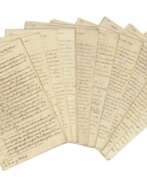

James Mario Matra, born James Magra, was an American of Corsican descent, diplomat and sailor.
Matra became famous for accompanying James Cook on his first voyage to the Pacific and for painting the voyage, although his participation in it was accompanied by scandal. In 1783 he proposed settlements in New South Wales, Australia, for American Loyalists and British convicts. But Matra's hopes for an official position in the proposed colony failed, and in 1786 he accepted the post of consul in Tangier, where he remained until his death.
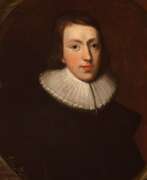

John Milton was a British poet and writer-publicist, intellectual and politician of the English Revolutionary period.
Milton first planned to become a priest, studied at Cambridge University, and then abandoned this activity. Several years he spent reading and self-education, learning many languages. In 1638 Milton traveled around the continent for about a year and a half, spending much time in Italy, primarily in Rome and Florence. He befriended young Italian literati, and his encounter with Galileo further influenced his writing.
Milton became best known for his poem Paradise Lost in Ten Books, which declares its purpose to justify the ways of God to man, but also touches on both universal and personal themes. Milton was the first author to use the word "cosmos" in our modern sense of "outer space," and his space epic takes place in a confidently Copernican universe.
In his prose works, Milton advocated the abolition of the Church of England and the execution of Charles I. From the outbreak of the English Civil Wars in 1642 and long after the restoration of Charles II as king in 1660, he spoke out against tyranny and state-sanctioned religion in all his works. As a Protestant, Milton was often in conflict with the Roman Catholic Church. As a civil servant, Milton became the voice of the English Commonwealth after 1649 and then under Oliver Cromwell, conducting international correspondence and defending the government against polemical attacks from abroad.
John Milton is considered the most important English writer after William Shakespeare. Author of political pamphlets and religious treatises, he is one of the most famous writers of the 1650s, the vibrant era of the English Revolution (Civil War).
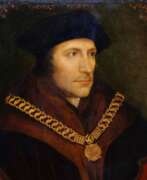

Thomas More was a British lawyer, humanist philosopher, writer and statesman.
As the son of a London judge of the Royal High Court, Thomas studied at Oxford and then in London with the best lawyers. More also studied the works of the ancient classics, improved in Greek and Latin languages, composed his works. In 1497 More met and became friends with Erasmus of Rotterdam, became a member of his humanist circle.
In 1510-1518 Thomas More was deputy sheriff of London, and in 1517 entered the service of the king, becoming one of the most effective and trusted civil servants of Henry VIII. He acted as his secretary, interpreter, speech writer, chief diplomat, counselor, and confidant. He was knighted in 1521, became Speaker of the House of Commons in 1523, and in 1525. - Chancellor of the Duchy of Lancaster. Around 1515. More wrote The History of Richard III, and in 1516 he published his most significant work, Utopia, in which he described an imaginary ideal state.
Thomas More opposed the divorce of King Henry VIII from Catherine of Aragon and refused to recognize the king as the head of the Church of England, as required by the Act of Supremacy in 1534. For his refusal, he was beheaded in the Tower of London in 1535. 400 years later, in 1935 Thomas More was canonized by the Catholic Church, and in 1980 the Church of England recognized him as a "saint and hero of the Christian Church."


Francesco Petrarca was an Italian poet, the founder of European humanism, and one of the greatest figures of the Italian Proto-Renaissance.
Petrarca studied at the University of Montpellier, then at the University of Bologna, in 1330 entered the service of Cardinal Giovanni Colonna as a chaplain. Then he made various pilgrimages, in 1353 settled in Milan at the court of Archbishop Giovanni Visconti, and carried out important diplomatic missions. Petrarca spent the last years of his life in the village of Arquà near Padua.
Since 1337 Petrarca began to write literary works: these were historical poems in Latin and lyric poems in Italian. In 1327 Francesco saw Laura for the first time, undivided love for which was the main source of his poetry. Laura was for him an object of adoration and pure platonic love. Despite the fact that they saw each other only a few times and were not really acquainted, Petrarca carried this feeling through his life.
Passionate about ancient culture, Petrarch deciphered and commented on the manuscripts of Cicero, Quintilian and others. He opposed medieval scholasticism interest in the earthly purpose of man, argued that the nobility of man depends not on the nobility of origin, but on his virtue. Petrarca highly valued the mind and creative abilities of man, and these humanistic ideas found vivid expression in his lyrics, revealing the inner world of man. Petrarca's work laid the foundation for the formation of Italian humanism. He also dreamed of the unification of Italy, the revival of the former greatness of Rome.
Francesco Petrarca had one of the richest libraries of his time, where ancient Roman writers, poets, historians, philosophers were represented. He was one of the brightest representatives of the culture of the Renaissance. Petrarca's works are characterized by perfection of form and musicality of verse, which played a significant role in the development of European poetry. Among his works are the poem "Africa" about the Second Punic War in Latin, allegorical pastoral eclogues "Bucolics" (1346/1357), a book of songs "My Italy", "Noble Spirit", sonnets, etc.
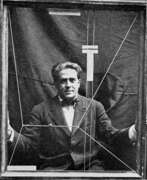

Francis Picabia, born Francis-Marie Martinez de Picabia, was a French avant-garde painter, poet, and typographist, whose work is celebrated for its diversity and innovation. His journey through various art movements, including Impressionism, Cubism, Dadaism, and Surrealism, showcases his refusal to be confined by any one style. Picabia's art is known for its eclectic nature, often blending mechanical elements with organic forms, thereby challenging traditional perceptions of art and beauty.
Picabia's significant contribution to the art world lies not just in his varied artistic output but also in his philosophical approach to creation. He believed in the freedom of expression, often using his art to critique societal norms and the art establishment itself. This rebellious spirit made him a pivotal figure in the Dada movement, where his works were celebrated for their irony and disdain for conventional art values.
Among his notable works, "Amorous Parade" and "I See Again in Memory My Dear Udnie" stand out, housed in prestigious institutions like the Museum of Modern Art in New York. These pieces exemplify Picabia's mastery over blending different elements of art movements, creating works that remain influential to this day. His legacy is not just in the pieces he created but also in his attitude towards art, encouraging future generations to challenge and redefine the boundaries of creativity.
For collectors and experts in art and antiques, Picabia's works represent not only significant artistic achievements but also valuable insights into the evolution of modern art. To stay informed about new product sales and auction events related to Francis Picabia, sign up for updates. This subscription is an essential resource for enthusiasts looking to enrich their collections with pieces from one of the most innovative artists of the 20th century.


Luigi Pulci was an Italian poet and humanist writer and diplomat.
For many years Pulci lived under the patronage of the Medici family and was a member of their circle of poets and artists, and later, after Lorenzo the Magnificent came to power, entrusted him with various embassies and diplomatic missions. At the age of about 40, Pulci entered the service of the northern condottiere Roberto Sanseverino and remained with him until his death.
Pulci wrote many different works, but is known primarily as the author of one of the outstanding epics of the Renaissance, the Morgante (Morgante or Morgante Maggiore). This chivalric-romantic parody and comic epic was first published in Italian in 1481. Its plot is based on the adventures of the knight Orlando and his squire, the giant Morgante. Pulci's unpretentious narrative and sharp satire immediately made "Morgante" very popular, but also aroused the anger of influential enemies like the Dominican friar Girolamo Savonarola, who called to burn copies of the book on the "bonfires of vanity".
Pulci's work influenced the French satirical writer François Rabelais (1494-1553).
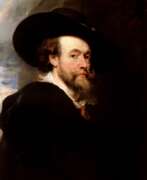

Peter Paul Rubens was a distinguished Flemish Baroque painter, renowned for his dynamic, vibrant, and sensuous paintings. Born on June 28, 1577, in Siegen, Westphalia, Germany, Rubens' family moved back to Antwerp in the Spanish Netherlands (now Belgium) after his father's death. He was raised in his mother’s Roman Catholic faith and received a classical education. He began his artistic training in 1591 and later traveled to Italy, where he was profoundly influenced by Renaissance masters like Titian, Tintoretto, and Veronese. This experience significantly shaped his artistic style.
Rubens' art is celebrated for its emphasis on movement, color, and sensuality. He was particularly skilled in depicting religious and mythological scenes, portraits, and landscapes. Some of his notable works include "The Descent from the Cross" and "The Raising of the Cross," which are prime examples of Baroque religious art, showcasing his unique style that blended influences from Italian Renaissance and his own innovations.
Rubens was not just a painter but also a diplomat, serving at various European courts. He was knighted by both Philip IV of Spain and Charles I of England. His diplomatic missions often intertwined with his artistic endeavors, as seen during his travels to Spain and Italy. In addition to painting, he was involved in designing tapestries, prints, and book title-pages. He ran a large workshop in Antwerp, producing works that were popular with nobility and art collectors across Europe. His studio was in his home, the Rubenshuis, now a museum.
His influence extended to his students, notably Anthony van Dyck, and his collaborative works with other artists like Jan Brueghel the Elder. Rubens' work continued to be celebrated for its vitality and influence on the Baroque style, making him one of the most influential artists of his time.
For those interested in the work and life of Peter Paul Rubens, many of his works can be found in museums and galleries worldwide, including the National Gallery in London, which houses several of his paintings like "A View of Het Steen in the Early Morning" and "Minerva protects Pax from Mars ('Peace and War')".
To stay updated on new product sales, auction events, and more related to Peter Paul Rubens, sign up for our updates. We provide essential information tailored for collectors and experts in art and antiques, focusing on the magnificent work of Rubens and his enduring legacy in the world of art.
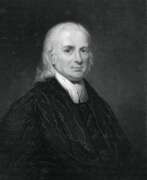

Christian Friedrich Schwarz was a German Lutheran missionary to India, a polyglot and diplomat.
Schwarz knew many languages, including Hebrew, Greek, Sanskrit, and Persian. Very young, he set out on a mission to India in early 1750 and was very successful. Schwartz was favorably received by Indian royalty, he taught Raja Serfoji of Tanjore, and was greatly respected by the local people for his good works.
The results of Christian Schwartz's missionary work exceeded all expectations. Schwartz founded several schools in India and had a significant impact on the establishment of Protestant Christianity in southern India. He lived in India until the end of his life and was buried with honors at St. Peter's Church in Maharnonbuhavadi, Thanjavur.
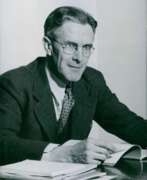

Henry DeWolf Smyth was an American scientist, nuclear physicist, and diplomat.
Smyth studied at Princeton and Cambridge Universities, taught in Princeton's physics department from 1924 to 1966, and chaired the department for many years. At first he investigated the ionization of gases, but from the mid-1930s he turned his attention to nuclear physics. During World War II, Smith was a member of the uranium section of the National Defense Research Committee. He also proposed electromagnetic techniques that were used to enrich the first samples of U-235 during the Manhattan Project. Smith worked as a consultant on this project from 1943 to 1945 and served as deputy director of the Metallurgical Laboratory at the University of Chicago.
In 1944, General Leslie Groves appointed Henry Smith to the Committee on Postwar Policy to propose a public policy for research and development of atomic energy after the war. He wrote the official public report on the bomb, which became known as the Smith Report and was widely distributed throughout the country.
After the war, Henry DeWolf Smith served as commissioner of the U.S. Atomic Energy Commission and as the U.S. representative to the International Atomic Energy Agency (IAEA). In 1953, he was President Eisenhower's chief advisor on Ike's "Atoms for Peace" speech and received the Atoms for Peace Award in 1968.
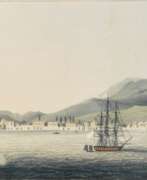

William Turner was a British diplomat and writer.
For five years, beginning in 1812, Turner was attached to the British Embassy in Constantinople, from where he traveled to Egypt, the Holy Land, Albania, Turkey, Greece, and the Greek Islands. In his diary he noted local manners, customs, and costumes, and described a meeting with Ali Pasha (1740-1822), the ruler of Ottoman Albania. Turner's travel narratives include images engraved from early Turkish drawings in the author's collection. He published this diary in 1820 under the title Journal of a Journey through the Levant. During his travels, Turner also amassed a large collection of ancient coins.
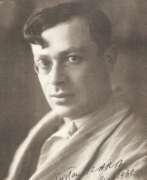

Tristan Tzara, originally named Sami (Samuel) Rosenstock, was a Romanian and French artist and writer best known as a founding figure of the Dada movement. Born in 1896 in Moinești, Romania, Tzara's influence extends across poetry, performance, and manifesto writing, marking him as a pivotal personality in 20th-century art and culture. His work challenged conventional norms and sought to disrupt the traditional boundaries of art, making him a central figure in the avant-garde community.
Dada, the movement with which Tzara is most closely associated, emerged as a reaction against the horrors of World War I, advocating for irrationality and anti-bourgeois protest. Tzara's contributions, including his manifestos, poetry, and performances, were instrumental in shaping Dada's legacy. His art and writings emphasized the importance of spontaneity and chaos, challenging the status quo and the very definition of art itself. Tzara's approach was not confined to a single medium; he explored poetry, playwriting, and critical theory, leaving a diverse and impactful body of work.
Though Tzara is not widely known for sculpture or painting in the traditional sense, his influence on these and other art forms is undeniable. His work and ideas laid the groundwork for later avant-garde movements, including Surrealism. While specific works of Tzara in museums or galleries were not detailed in the research, his legacy is preserved through the collections of major institutions worldwide, reflecting his enduring impact on the arts.
For collectors and experts in art and antiques, understanding Tzara's contributions provides insight into the radical shifts in culture and art in the early 20th century. His work remains a testament to the power of art to challenge, provoke, and transform. To stay informed about new product sales and auction events related to Tristan Tzara, sign up for our updates. This subscription ensures you're alerted to unique opportunities to engage with the history and legacy of a key figure in modern art.
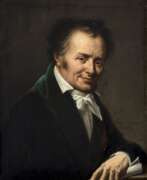

Dominique Vivant, Baron Denon was a French artist, writer, diplomat, author, and archaeologist. Denon was a diplomat for France under Louis XV and Louis XVI. He was appointed as the first Director of the Louvre museum by Napoleon after the Egyptian campaign of 1798-1801, and is commemorated in the Denon Wing of the modern museum and in the Dominique-Vivant Denon Research Center. His two-volume Voyage dans la basse et la haute Egypte ("Journey in Lower and Upper Egypt"), 1802, was foundational for modern Egyptology.
